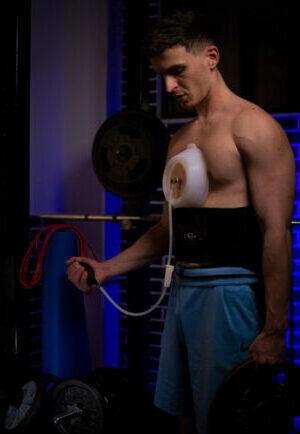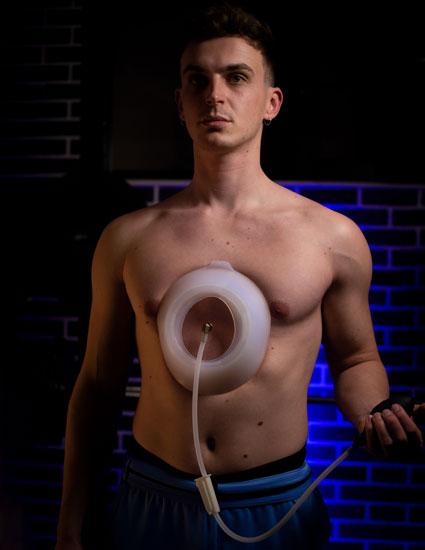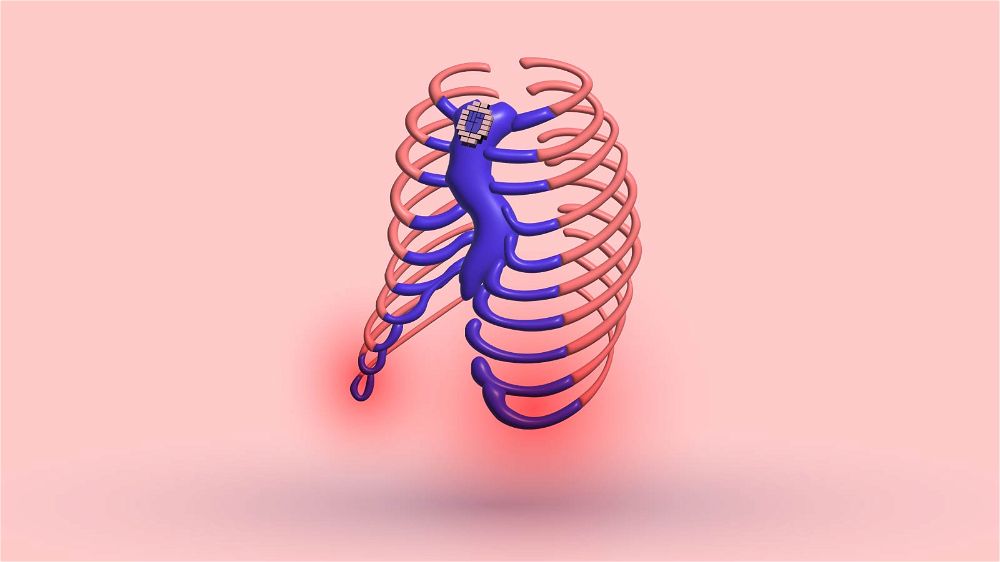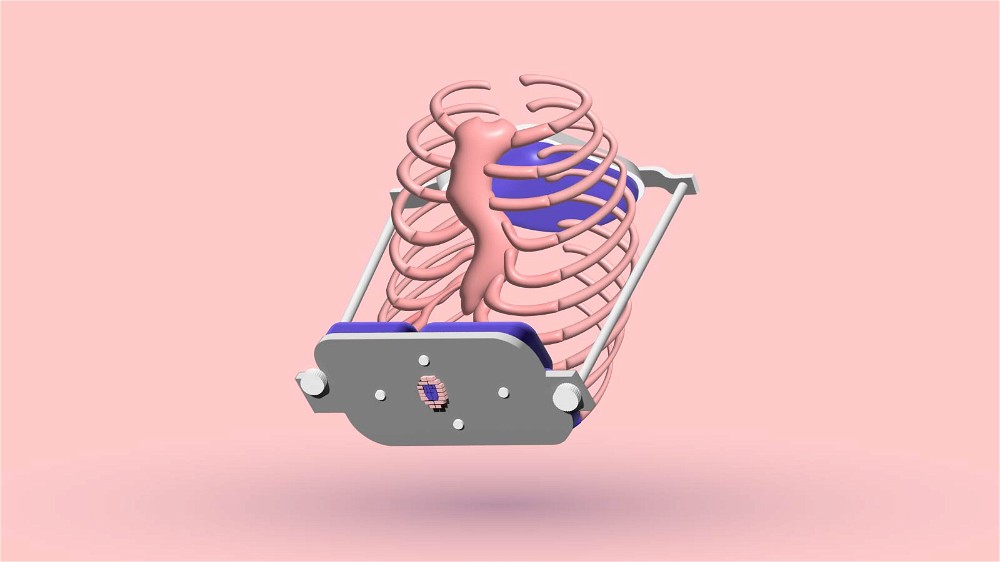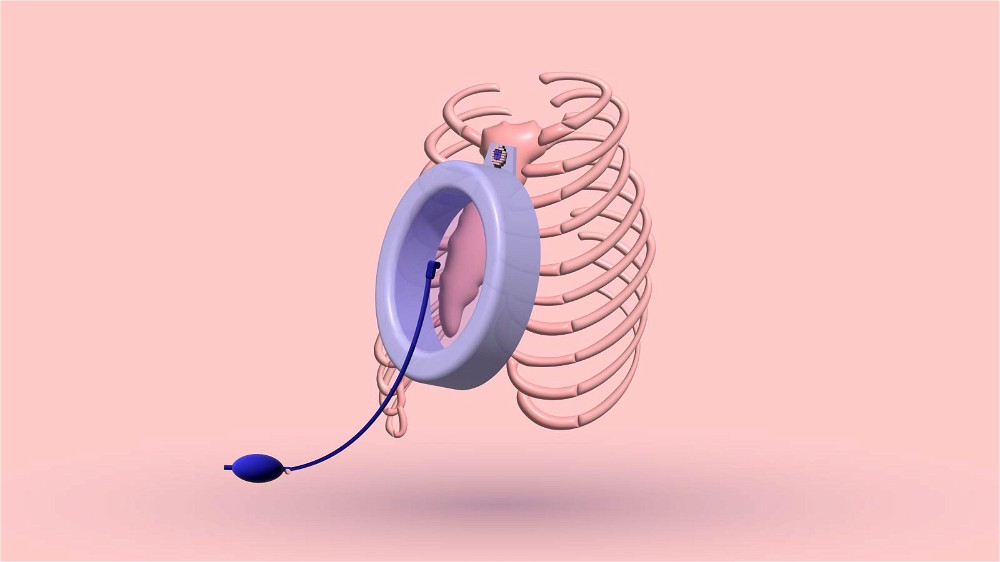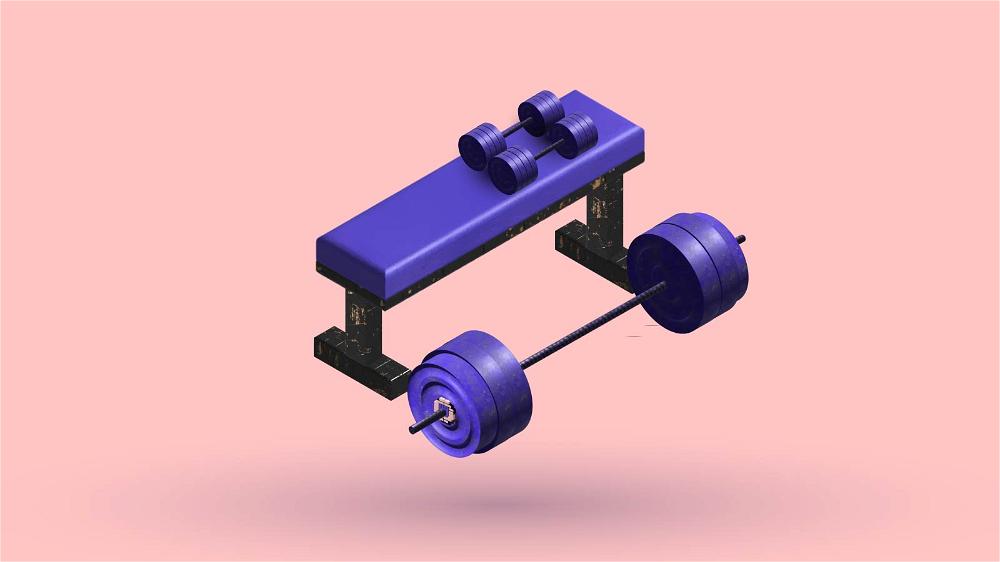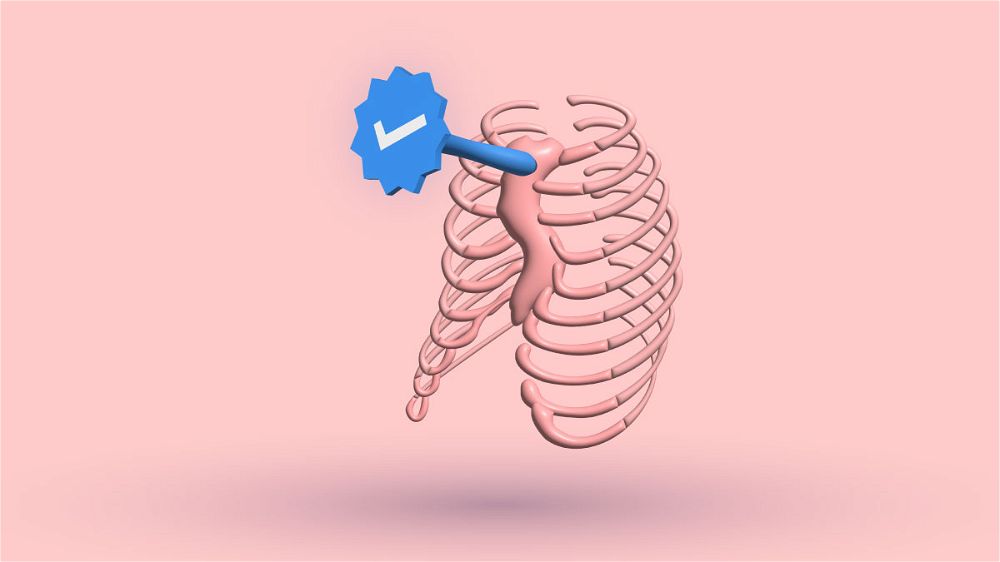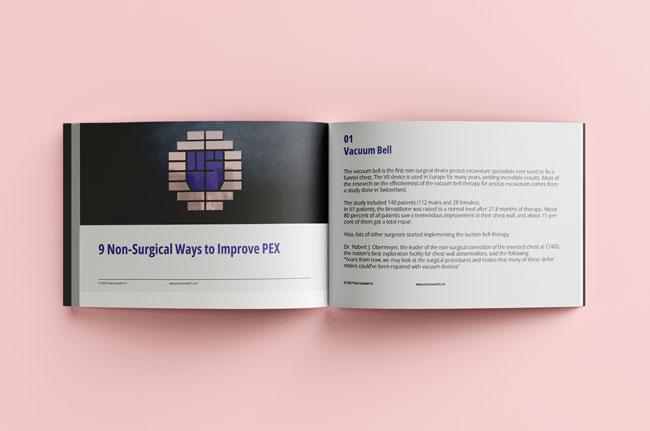Most people with pectus excavatum that want to start with mixed martial arts are worried about getting kicked in the chest.
Having an already concave chest and being kicked or punched with full force in that area seems very disturbing. In reality, getting hit in the sunken breastbone can't push it further inwards—many fighters with pectus excavatum train in MMA.
The most significant issue is getting tired faster than the competition because of the limited lung capacity caused by the deformity. This post will cover everything that may concern you about combating a concave chest deformity.
FEELING INSECURE IN THE RING
It is normal to feel insecure about your chest deformity in the ring. However, don't let it interfere with the type of training you do.
Avoid bodybuilding, except if your coaches tell you to gain weight to keep at the top of your weight class. Your goal shouldn't be to impress the attendance with how muscular or perfect your physique is but to come out of the ring victorious.
The general public will be more impressed with how you're destroying your opponent with an obvious deformation in your chest.
Set an example for future fighters and show them that the pectus excavatum deformity can't stop them from being a winner in the ring and in life in general.
11 MMA FIGHTERS WITH PECTUS EXCAVATUM
I will share a list of fighters with pectus excavatum who, despite their deformity, are very successful in their sport.
- Edmen Shahbazyan
- Matt Hughes
- Mark Hughes
- Nate Diaz
- Nick Diaz
- Conor McGregor (probably)
- Robert Drysdale
- Tommy Fury
- Quinton Jackson
- Kofi Kingston
- Herbert Burns
You can read more about each fighter and how successful they became despite their deformity, along with 50 other highly successful people with pectus excavatum.
CAN WEIGHTLIFTING HELP WITH MMA?
Some old-school coaches think weightlifting is terrible for MMA because it will slow the athlete down and reduce their power. These coaches are probably right, but they associate weightlifting with bodybuilding to a certain extent.
The truth is that Mixed Martial Artists need strength training to build their fast-twitch muscle fibers, which allow them to be more explosive. Bodybuilding and strength training are way different. Just because they use weights doesn't mean they are the same thing.
ADDING MUSCLE CAN MAKE YOU A LESS FUNCTIONAL FIGHTER
To make pectus excavatum less noticeable by adding muscle mass throughout your body, especially around your core and chest, you must follow a bodybuilding type routine. This can make you heavier and less functional in your sport.
You will get bigger and stronger if you do bodybuilding as a martial artist. Still, you will also add bulk you probably don't want because you might jump into another weight class.
Also, the tempos associated with bodybuilding are going to slow you down. Bodybuilding requires longer time under tension, slower movement of the weights, and sometimes half-reps which won't translate very well into your sport.
You will build muscle but not improve functionality. You may need a full range of motion throughout the whole movement. To build power and neuromuscular explosive strength, you should train with less time under tension.
5 WAYS TO MAKE SUNKEN CHEST LOOK GOOD WHILE REMAINING FUNCTIONAL
- Fewer Repetitions
- Less volume
- Heavier weights
- More sets
- Heavy compound exercises
You will need to use the parameters associated with strength training, not bodybuilding.
COMMON AMATEUR MMA FIGHTER MISTAKE
Many amateur MMA fighters with pectus excavatum make the following mistake; They lift weights to get bigger, not stronger. Because of this, they add size and look better, making their pectus excavatum less noticeable.
Still, they underperform in their sport because it slows them down. Keep the weightlifting exercises to a minimum, and focus on improving poor pectus posture if you have one.
I wouldn't recommend doing more than 2 or 3 compound exercises per workout session. Each workout should last less than 30 minutes. Remember that MMA fighters or boxers aren't bodybuilders or powerlifters.
You need to supplement your fighting with strength training, not the other way around. This can take away from your real training time, making you better in your sport.
MMA CAN SLOW MUSCLE GAINS
Focusing on martial arts can take away from the bodybuilding progress to make the deformity less obvious. Your body is only capable of recovering to a certain amount.
You can't go 100% in MMA, then 100% in bodybuilding, and recover from this successfully. MMA is fierce and taxing on the body, and you may encounter some injuries.
INJURIES ARE COMMON IN MMA
I had a friend who trained in jiu-jitsu who said constant pulling and tweaking could cause many injuries. Being in the armbar consistently, where the biceps are strained, the opponent can pull the shoulders out of the socket or tear the bicep muscle.
Elbow tendonitis and knee pain are pretty standard, and the pains are persistent. He got tired of being physically beaten up and tired, so he decided to quit jiu-jitsu and focus more specifically on bodybuilding to improve his appearance. In bodybuilding, it is in your control whether you will get injured or not.
In MMA, the injury rate is very high. You can't know when the opponent will hurt you, stopping you from doing other physical activities that will help you improve your pectus excavatum deformity.
MMA AND RECOVERY
Practicing MMA intensely can hinder the recovery process in bodybuilding, so you may modify the training intensity while at the gym. Taking more time off to recover properly may be necessary. Increased activity can also cause body weight loss while doing MMA and weightlifting.
If you're doing all bodybuilding workouts, and you decide to add MMA to the routine, it will impact you. It would be best if you found a compromise to cut down on weight lifting to find a compromise to allow more recovery for your martial arts workouts. It all depends on your personal goals and what you're trying to accomplish with your physique.
DO WHAT MAKES YOU FEEL FULFILLED
Ultimately, if you are interested in MMA and not that much in bodybuilding, it would be best to focus only on MMA. It will make you more active, instead of dreading every workout in the gym because you don't like weightlifting.
Try it, and maybe that is your thing. I love weightlifting so much that I sometimes avoid other activities like playing basketball because the injury rate is very high, and that will hinder me from the thing I love doing a lot, which is weightlifting.
I've tried judo and kickboxing for a while, but I quit, mostly because I wouldn't say I liked being beaten up and sore after every training. That's why I decided to put martial arts aside and resume doing the basic monotonous bodybuilding workouts I love so much.
GETTING HIT DIRECTLY IN THE CAVITY
Muay Thai or kickboxing may seem too dangerous to do. Still, on the other hand, Brazilian jiu-jitsu seems safer because you can't get kicked or hit in that concave area.
However, even though you can't get hit, ground fighting combat sports are often scarier for fighters with pectus excavatum because an opponent can push a knee on your rib cage.
Many fighters said they were constantly getting hit, even with knees in the hollow area. However, that wasn't as problematic as many thought it would be.
I've stumbled upon a boxer with a severely sunken chest on Reddit. The user said getting punched directly in the cavity didn't hurt more than taking a standard punch and didn't affect his boxing.
MMA WILL INCREASE EXERCISE CAPACITY
You will probably get used to it, and training hard for your sport will increase your exercise capacity and help you with your deformity. Running daily and preparing for fights will help you increase your lung capacity.
Gaining muscle mass in the chest area and having a solid core will help you mentally be more comfortable taking hits in the concave area. This will help you psychologically, as taking hits in the chest with pectus excavatum is probably a mental thing.
BOXING WITH NUSS BAR
Patients who underwent the Nuss procedure and had a Pectus bar inserted underneath their sternum should avoid heavy contact sports until the bar is surgically removed from the chest.
Here's an exciting story about how a boxing coach helped his son with pectus excavatum post-surgically. As doctors requested, the kin successfully underwent a Nuss procedure and started boxing without contact to expand his lungs after surgery.
Also, some patients are advised to avoid bending or twisting the torso, which is necessary for any martial art sports. Carrying weights can also be restricted.
According to CHKD, patients can return to competitive sports three months after the Nuss procedure. However, any competitive contact sports such as football, wrestling, boxing, etc., should be avoided at all costs.
HOW TO DEAL WITH ANXIETY IN THE RING
Most fighters that participate in martial arts always have their bodies on display. The physical appearance of the deformed chest can cause social anxiety, even to combatants.
Even though fighters with deformities may have lower lung capacity than their opponent, this may not often be the biggest issue.
They are sometimes uncomfortable with the way they look. Even if you may not have ripped six-pack muscles and a muscular chest, the simplest thing you can do is accept that your chest looks funny.
When you don't take it so seriously, the embarrassment may disappear. This is the advice of Olympic swimmer Cody Miller, which I admire and helped me tremendously.
Even though he suffers from a severe pectus excavatum, he said that he wrestled in high school and was very good at it despite his deformity. He even outlasted his rivals because he had fantastic endurance due to swimming.
BOTTOM LINE
Most people with pectus excavatum hesitate to start fighting sports for obvious reasons. Punching in the concave area may be very awkward, but it is not as bad as people think.
Many professional fighters with winning records suffer from a sunken chest too. Also, other amateur fighters said being hit in the cavity doesn’t feel different from taking a punch elsewhere.
Don’t worry. A punch won’t indent your sternum more. It is just your mind playing games with you. However, the most significant difference the deformity will make is your lung capacity. You will probably gas out quicker than your opponent because of the lung compression.
Because of that, you must constantly remain in incredible physical shape to outlast your rivals. The only exception to avoid contact sports is if you underwent a Nuss procedure. You must talk with your doctor about whether you can participate in a full-contact sport like MMA.
However, you most likely must avoid fighting sports until your pectus bar is removed after a few years. Recreationally, fighting sports will be an excellent choice to get in shape and work on your endurance.
Thank you for reading! If you have any questions, feel free to leave them in the comments below.
6 Sources
- Two people on the same week tore their bicep trying to resist going into an
armbar : bjj [Internet]. [cited 2022 Dec 2]. Available from: https://www.reddit.com/r/bjj/comments/b1t7r0/two_people_on_the_same_week_tore_their_bicep/ - Pilegaard HK. Single centre experience on short bar technique for pectus excavatum. Ann Cardiothorac Surg. 2016 Sep;5(5):450–5.
- Making a Difference: Boxing coach shapes fighters in and out of ring [Internet].
[cited 2022 Dec 2]. Available from: https://richmond.com/making-a-differenceboxing-coach-shapes-fighters-in-and-out-of-ring/article_598dbc22-485e-5695-
8695-2a7537cc320f.html - Bal-Bocheńska MA. Evaluation of the effects of rehabilitation after surgery using
the Ravitch and Nuss methods: a case study. Kardiochir Torakochirurgia Pol.
2016 Mar;13(1):72–7. - Not Found | Page not found | Children’s Hospital of The King’s Daughters [Internet]. [cited 2022 Dec 2]. Available from: https://www.chkd.org/our-services/nuss-procedure/nuss-procedure-faqs/
- How Cody Miller became the Iron Man of Olympic swimming [Internet]. [cited
2022 Dec 2]. Available from: https://olympics.com/en/news/cody-miller-ironman-olympic-swimming


